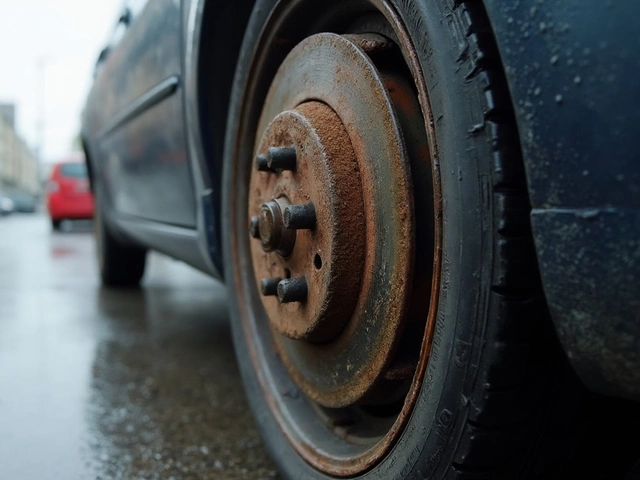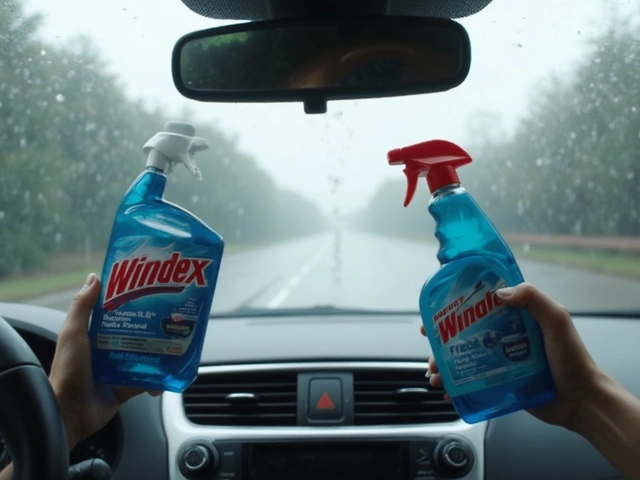One good pothole can turn your car’s smooth drive into a noisy, rattly mess. Suspension damage doesn’t just make your car uncomfortable—it’s also dangerous. In the UK, road defects are blamed for thousands of vehicle breakdowns every year. So, can you fix suspension damage? Absolutely, but the answer gets interesting once you see what’s really going on underneath your car. Let’s pull back the curtain and see what you’re actually dealing with, whether it’s a knocking noise, uneven tyre wear, or a steering wheel that’s suddenly off-centre.
Understanding Suspension Damage: What Goes Wrong
Suspension isn’t just a set of springs and shocks—it’s a network of parts designed to work in harmony. We’re talking about control arms, ball joints, shock absorbers, struts, bushings, and anti-roll bars, all connecting your wheels to the body of your car. This is what keeps the ride steady even if Bristol’s roads look like a patchwork quilt after winter. But what actually goes wrong?
First off: suspension damage often starts subtle. A blown shock absorber might lead to a slightly bounceier ride, while a worn bushing could create an annoying rattle over bumps. If you ignore it, though, simple issues can snowball—damaged shocks make your tyres wear unevenly, worn ball joints can cause the wheel to wobble, and broken control arms might even snap during a sharp turn. Steering gets heavier or less precise, and braking distances can increase.
Here’s what typically fails:
- Shock absorbers and struts: These dampen the bumps. When they leak or break, you’ll feel every ripple in the road. Modern units on UK cars are often sealed, so a leak means it’s time to replace.
- Control arms and bushings: These absorb vibrations. Bushings (usually rubber or polyurethane) crack over time, especially if you drive through road salt in winter.
- Ball joints: Pivot points for steering and suspension—loose joints can cause knocking or even cause wheel separation if severely worn.
- Anti-roll bars (sway bars): These keep the car level in corners. Broken end links result in excessive body roll, especially obvious on country roads.
Factor in that most of these parts wear at different rates—estimates from the RAC suggest the average car in the UK will need suspension work at least once every 55,000 to 85,000 miles. And if you’re driving older or heavier cars (like an estate with a boot full of tools), those numbers shrink even more.
Can You Fix Suspension Damage Yourself?
If you’re the sort who likes to get their hands dirty, you might be tempted to tackle suspension repairs on your driveway. Plenty of DIYers change their own shock absorbers and strut assemblies—especially since many parts are bolted on. You’ll need a good socket set, breaker bar, and a jack that’s not from the Stone Age. Don’t forget axle stands, because crawling under a car supported only by a jack is asking for trouble.
But hold on—some repairs aren’t as straightforward as removing a few bolts. Spring compressors, for example, are necessary (and a bit scary) for coil spring removal. Messing up can send a compressed spring flying across your garage faster than you can say “hospital visit.” Other jobs, like pressing out bushings or replacing wheel bearings, might require a hydraulic press. If your car has adaptive suspension or air ride (common on newer or luxury models), repairs often mean recalibrating sensors or software resets. That’s out of reach for most DIY setups.
Not afraid to try? Here’s a rough breakdown of what’s doable on your own and what’s not:
| Suspension Problem | DIY (Y/N) | Special Tools Needed |
|---|---|---|
| Replace shock absorbers | Yes | Jack, stands, sockets; sometimes spring compressor |
| Change coil springs | Maybe | Spring compressor—can be dangerous |
| Replace bushings | No/Easy bits only | Press required |
| Swap anti-roll bar links | Yes | Jack, stands, sockets |
| Fix adaptive/air suspension | No | Diagnostics, calibration gear |
If you’re unsure, check your vehicle’s service manual for torque settings and instructions. Missing something simple—like properly tightening a bolt—can lead to failure later. For anything involving major suspension geometry (like welded-on arms or heavy corroded bolts), leave it to a pro with a lift and impact tools. Garage techs in the UK charge anywhere from £40 to £90 per hour, so factor that into your decision.

Spotting Suspension Problems Early
Saving money starts with spotting issues before they become expensive disasters. Suspension parts wear gradually, but there are warning signs you shouldn’t ignore—even if you’re not a car nut. Here’s what to look for on your daily drive:
- Bumpy or bouncy ride: If your car keeps bouncing after hitting a speed bump, your shocks or struts are probably toast.
- Odd noises: Clunks, squeaks, or rattles mean something is loose. Pay attention to noises that come from one corner or only happen when turning.
- Poor steering feel: If your steering wheel is off-center or the car drifts to one side, you might have bent arms or worn-out bushings.
- Uneven tyre wear: Feathering or cupping on tyres shouts “alignment problem.” Get it checked before it ruins your new rubber.
- Sagging corner: If one side sits lower, check for a broken coil spring.
- Grease or fluid around suspension components: This could be a leaking shock absorber or damaged constant velocity (CV) boot.
Don’t just rely on guesswork, though. Get underneath and inspect for rust, cracks in the control arms, or split rubber bushings. Wiggling the wheel side-to-side while the car is jacked up can show if there’s excessive play, pointing to worn ball joints or tie rods. Garage specialists often use a lever bar to check movement—if you can do it safely, give it a go.
Annual MOT tests pick up many suspension defects, but between inspections, you’re on your own. Data from 2024 shows that nearly 20% of MOT failures are down to suspension issues alone—for a country obsessed with potholes, this isn’t a surprise. Taking action early can save you hundreds in extra repairs, not to mention safety headaches.
DIY or Professional Repair: When to Call in the Experts
There’s a fine line between a money-saving DIY fix and a costly mistake. Suspension repairs aren’t just about swapping old parts for new ones. Even newly fitted arms or bushings need correct torque settings and sometimes require wheel alignment afterwards. Bad geometry can wear tyres in months and make your car handle worse than ever. If you’ve fixed parts but still notice knocking, don’t just cross your fingers—it’s worth double-checking your work or getting a mechanic to inspect it.
So, when should you throw in the towel and call a garage?
- You don’t have the right tools (spring compressors, impact guns, torque wrenches)
- Parts are heavily corroded or seized
- The suspension includes computerized sensors or air bags
- Your car needs a wheel alignment after repair—a must for most suspension jobs
- You’re not confident about safely lifting/supporting the car
Here’s a quick glance at UK garage repair prices for reference (2025 estimates):
| Job | Parts Cost (£) | Labour (£) |
|---|---|---|
| Front shock/strut replacement (pair) | 120-300 | 80-200 |
| Bushing replacement (per axle) | 40-150 | 100-250 |
| Ball joint replacement (pair) | 50-110 | 70-150 |
| Anti-roll bar link swap (pair) | 30-70 | 40-80 |
| 4-wheel alignment | — | 45-100 |
If it all seems daunting, remember: good suspension is about more than comfort—it’s a key part of staying safe on Britain’s unpredictable roads. Don’t put off repairs if you find anything suspect. Sorting problems quickly can keep your car fun to drive (and legal, too). When in doubt, trust a reputable local garage—they’ll have the know-how and the kit to get you sorted without drama.






